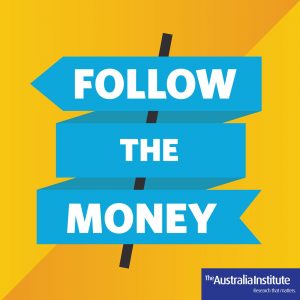‘No one left behind’: Why doesn’t the Wellbeing Framework measure poverty?
According to Treasurer Jim Chalmers, the new Wellbeing Framework “helps us put … fairness and opportunity at the very core of our thinking”, but (astoundingly) lacks any substantive measure of poverty.
The Wellbeing Framework released in July attempts to measure “what matters”, which surely must include the number of people in Australia living in poverty
Poverty is the inability of people to meet their most basic needs, for instance food, health and housing. Poverty matters, both for its immediate effects, we do not want people to suffer, and longer-term effects, such as negative health consequences and the inability to fully engage with and contribute to society.
The closest the Framework comes to measuring poverty is the ‘Making ends meet’ indicator, this includes survey results on the proportion of people recently experiencing cash flow problems or unable to raise $2,000 in an emergency. There is nothing inherently wrong with these metrics, they do reveal a side of the financial stressors faced by households, but they are not a good substitute for more directly measuring poverty.
There are various ways governments measure poverty, all with strengths and weaknesses, two places to start would be the poverty rate and poverty gap. The poverty rate is the proportion of people whose income falls under a defined poverty line. In Australia, the poverty line is usually either defined in relative terms, for instance 50% of median income, or against the costs of basic needs, for instance the Henderson poverty line. The Government could choose to adopt the ACOSS and UNSW poverty lines of 50% of median income and 60% of median income.
The poverty gap is the difference between the average incomes of those in poverty and the poverty line. This measures the depth of poverty, how far the incomes of those in poverty fall below the rest of society (ie how extreme is their poverty), rather than simply the headcount.
A benefit of using these metrics is that they allow for intercountry comparisons, demonstrating that Australia falls below the OECD average on both these metrics, particularly on the poverty rate for those over 65 years old. Neither of these metrics is perfect, but they would be a good start. Not only are they international comparable, but people have a general sense of poverty that enables for easy and solid understanding. Less poverty is better, and reducing poverty is a common goal that people would assume comes firmly under the banner of “well-being”.
In 1987 Bob Hawke promised that no Australian child need live in poverty by 1990. If Chalmers is committed to emulating the Hawke-Keating government he should also copy this ambition to reducing or eliminating poverty in Australia, that starts with measuring it properly.
Between the Lines Newsletter
The biggest stories and the best analysis from the team at the Australia Institute, delivered to your inbox every fortnight.
You might also like
There’s nothing naughty about being poor. Why Christmas is a horrible time for kids living in poverty
The busiest shopping weekend of the year is upon us, where shopping malls become a desperate frenzy of overindulgence and waste. But spare a thought for those who can’t afford even the trimmest of trimmings this Christmas.
Failing the test: Australian universities in crisis
Great countries have great institutions, but Australian universities are a mess.
5 ways and 63 billion reasons to improve Australia’s tax system
With a federal election just around the corner, new analysis from The Australia Institute reveals 63 billion reasons why our next Parliament should improve the nation’s tax system.




